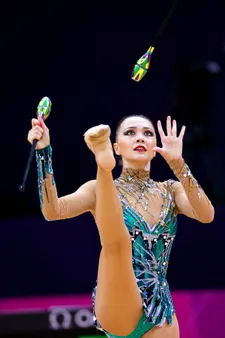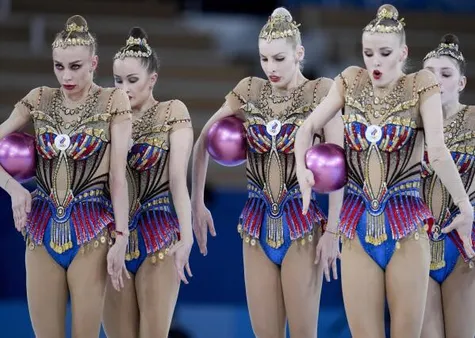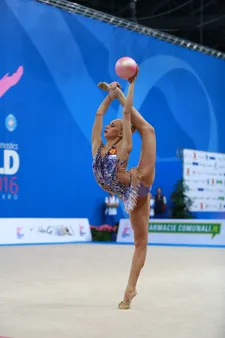Table of Contents
Welcome to Kizworld, where we unlock the captivating world of** rhythmic**, the heartbeat of music and life. From the harmonious melodies that dance through our ears to the synchronized steps of a captivating dance, rhythm weaves its intricate patterns through the tapestry of human expression. In this comprehensive exploration, we delve into the profound significance of** rhythmic**, uncovering its vital role in music, cultural diversity, skill development, and engaging activities for children. Join us on this journey as we discover the power of rhythm to move, inspire, and connect us all.
The Irresistible Allure of Rhythmic Engagement: Unlocking the Power of Captivating Content
I. Rhythmic Gymnastics: A Graceful Fusion of Art and Athleticism
Rhythmic Gymnastics: A Graceful Fusion of Art and Athleticism
A History of Harmony: Tracing the Roots of Rhythmic Gymnastics
Rhythmic gymnastics, a captivating fusion of art and athleticism, boasts a rich history dating back to the early 20th century. Drawing inspiration from ballet, dance, and traditional gymnastics, this enchanting sport has evolved into a mesmerizing spectacle. A journey through the annals of rhythmic gymnastics reveals the artistry, grace, and determination that have shaped its legacy.
Balancing Beauty and Precision: Unveiling the Elements of Rhythmic Gymnastics
The allure of rhythmic gymnastics lies in its harmonious blend of five dynamic elements: leaps, jumps, turns, balances, and waves. These elements, when executed with precision and elegance, create an enchanting display of athleticism and artistry. Unveiling the secrets of rhythmic gymnastics reveals the intricate techniques and unwavering focus required to conquer each element.
International Recognition: Rhythmic Gymnastics on the Global Stage
The world of rhythmic gymnastics is a vibrant tapestry of international competition, with athletes from across the globe vying for glory. The sport's governing body, the International Gymnastics Federation (FIG), oversees major events, including the World Championships and Olympic Games. Delving into the world of rhythmic gymnastics competitions showcases the fervor, dedication, and artistry that define this captivating sport.
Training and Technique: The Path to Rhythmic Mastery
Rhythmic gymnastics demands unwavering dedication and rigorous training. Aspiring gymnasts embark on a journey of physical conditioning, technical skill development, and artistic expression. Hours of practice and unwavering focus are essential to achieve the grace and precision that characterize this sport. Unveiling the secrets of rhythmic gymnastics training offers insights into the relentless pursuit of excellence that defines the lives of rhythmic gymnasts.
Inspiring Icons: The Legends of Rhythmic Gymnastics
The world of rhythmic gymnastics is adorned with iconic figures whose names reverberate through time. From the elegance of Evgenia Kanaeva to the brilliance of Alina Kabaeva, these legendary gymnasts have redefined the boundaries of the sport. Their performances have captivated audiences, leaving an indelible mark on the history of rhythmic gymnastics. Celebrating the rhythmic gymnastics icons pays homage to their extraordinary talent, unwavering dedication, and the inspiration they provide to aspiring gymnasts worldwide.
Benefits Beyond Competition: Life Lessons from Rhythmic Gymnastics
Rhythmic gymnastics extends its influence beyond the competitive arena. The sport instills valuable life lessons, fostering discipline, perseverance, and a healthy body image. Gymnasts learn to embrace challenges, overcome setbacks, and strive for excellence, qualities that serve them well both on and off the competition floor. Unveiling the benefits of rhythmic gymnastics for children sheds light on the positive impact this sport can have on young lives, shaping their physical, mental, and emotional well-being.
Conclusion: A Tapestry of Grace, Strength, and Harmony
Rhythmic gymnastics captivates audiences with its mesmerizing fusion of art and athleticism. The intricate techniques, dynamic elements, and expressive performances create a spectacle that transcends competition. As gymnasts strive for excellence, they embody the true essence of sport: grace, strength, and harmony.
II. List of Famous Rhythmic Gymnasts
- Evgenia Kanaeva
- Alina Kabaeva
- Irina Viner-Usmanova
- Oksana Kostina
- Margarita Mamun
III. The Allure of Rhythmic Gymnastics: A Journey Through Beauty and Precision
The Allure of Rhythmic Gymnastics: A Journey Through Beauty and Precision
A Graceful Fusion of Art and Sport
Rhythmic gymnastics, a captivating sport that seamlessly blends the elegance of dance with the athleticism of gymnastics, has captivated audiences worldwide. This mesmerizing discipline demands exceptional coordination, flexibility, and artistry, as gymnasts execute intricate routines accompanied by rhythmic music. With its roots in classical ballet and traditional gymnastics, rhythmic gymnastics has evolved into a dynamic and visually stunning sport that showcases the grace and athleticism of its participants.
The allure of rhythmic gymnastics lies in its unique combination of elements. Gymnasts perform a series of complex body movements, including leaps, jumps, turns, and balances, while simultaneously manipulating hand-held apparatus such as balls, hoops, clubs, ribbons, and ropes. These apparatus add an extra layer of difficulty and artistry to the routines, requiring gymnasts to demonstrate exceptional control and coordination.
Apparatus | Description |
Ball | A small, lightweight ball made of rubber or plastic. |
Hoop | A large, lightweight hoop made of plastic or metal. |
Clubs | A pair of short, lightweight clubs made of wood or plastic. |
Ribbon | A long, flowing ribbon made of silk or satin. |
Rope | A long, lightweight rope made of hemp or nylon. |
A Global Phenomenon
Rhythmic gymnastics has gained immense popularity across the globe, with gymnasts from various countries competing in international competitions. The sport is particularly popular in Eastern Europe, where it originated, as well as in countries like Russia, Ukraine, Belarus, and Bulgaria. However, rhythmic gymnastics has also gained a significant following in other parts of the world, including the United States, Canada, Japan, and China.
The growth of rhythmic gymnastics can be attributed to its captivating nature and its appeal to audiences of all ages. The sport's combination of athleticism, artistry, and grace makes it a spectacle that is both visually stunning and emotionally engaging. Additionally, the sport's relatively low equipment requirements and its accessibility to athletes of all backgrounds have contributed to its widespread popularity.
- Benefits of Gymnastics for Kids
- How to Improve Your Flexibility and Mobility with Gymnastics
- Best Gymnastics Equipment for Home Use
A Path to Physical and Mental Well-being
Beyond its aesthetic appeal, rhythmic gymnastics offers numerous physical and mental benefits to its participants. The sport's demanding routines help gymnasts develop strength, flexibility, coordination, and balance. Additionally, rhythmic gymnastics can improve cardiovascular health, promote weight management, and reduce the risk of chronic diseases.
Moreover, rhythmic gymnastics can have a positive impact on mental well-being. The sport's emphasis on discipline, focus, and perseverance can help gymnasts develop resilience and self-confidence. Additionally, the social aspect of rhythmic gymnastics, including teamwork and camaraderie, can contribute to improved mental health and overall well-being.
Conclusion
Rhythmic gymnastics is a captivating sport that combines athleticism, artistry, and grace. Its unique blend of elements, including intricate body movements and the manipulation of hand-held apparatus, creates a visually stunning spectacle that has captivated audiences worldwide. The sport's global popularity can be attributed to its accessibility, its appeal to audiences of all ages, and its numerous physical and mental benefits. As rhythmic gymnastics continues to grow and evolve, it is poised to captivate and inspire future generations of athletes and fans alike.
IV. Rhythmic Gymnastics: A Global Tapestry of Cultural Expression
Rhythmic Gymnastics: A Global Tapestry of Cultural Expression
A Cultural Mosaic of Grace and Athleticism
Rhythmic gymnastics, a captivating spectacle of artistry and athleticism, has woven its way into the hearts of audiences worldwide. This mesmerizing sport seamlessly blends the grace of dance with the precision of gymnastics, creating a captivating display of beauty and athleticism. As rhythmic gymnasts glide across the floor with effortless poise, their every movement tells a story, evoking emotions and painting vivid pictures in the minds of spectators.
The roots of rhythmic gymnastics can be traced back to the early 20th century, where it emerged as a distinct discipline within the gymnastics family. Over the decades, rhythmic gymnastics has evolved into a global phenomenon, captivating audiences in countries across the globe. Its popularity stems from its unique fusion of elements, including dance, music, and apparatus manipulation. Gymnasts employ various pieces of equipment, such as balls, ribbons, hoops, and clubs, to accompany their graceful movements, adding an extra layer of complexity and artistry to the performance.
Country | Notable Gymnasts |
Russia | Alina Kabaeva, Yevgenia Kanaeva, Margarita Mamun |
Bulgaria | Maria Gigova, Simona Peycheva, Neviana Vladinova |
Ukraine | Anna Bessonova, Nataliya Godunko, Olena Vitrichenko |
Belarus | Inessa Lisovskaya, Melitina Staniouta, Alina Harnasko |
Spain | Carolina Rodriguez, Almudena Cid, Natalia Garcia |
The Power of Rhythmic Gymnastics
Beyond its captivating beauty and athleticism, rhythmic gymnastics holds immense power in promoting physical and mental well-being. The sport demands a combination of strength, flexibility, coordination, and artistry, contributing to the overall fitness and development of gymnasts. Furthermore, rhythmic gymnastics fosters discipline, perseverance, and a strong work ethic, traits that extend beyond the gym and into various aspects of life.
The mental benefits of rhythmic gymnastics are just as profound. The sport cultivates concentration, focus, and self-expression, nurturing gymnasts' emotional intelligence and mental resilience. Rhythmic gymnastics provides a platform for gymnasts to express themselves creatively, allowing them to explore their artistic potential and develop a sense of identity and purpose.
Rhythmic Gymnastics as a Catalyst for Cultural Exchange
Rhythmic gymnastics has transcended its role as a sport, becoming a catalyst for cultural exchange and understanding. As gymnasts from different countries compete together on the same stage, they share their unique traditions, music, and dance styles with the world. This cross-cultural pollination fosters respect and appreciation for diverse cultures, promoting unity and breaking down barriers.
The global nature of rhythmic gymnastics also provides opportunities for cultural exchange beyond the competitive arena. Rhythmic gymnastics workshops, festivals, and exhibitions bring together gymnasts, coaches, and enthusiasts from around the world, creating a vibrant and inclusive community. These events serve as platforms for sharing knowledge, skills, and experiences, fostering a sense of global unity through the shared love of rhythmic gymnastics.
- How to Do a Handstand: A Step-by-Step Guide for Beginners
- The Benefits of Gymnastics for Kids: Building Strength, Confidence, and Coordination
- The Best Gymnastics Equipment for Home Use: Creating a Fun and Safe Training Space
- How to Improve Your Flexibility and Mobility With Gymnastics: Exercises and Stretches for Enhanced Range of Motion
- The History and Evolution of Gymnastics: From Ancient Greece to the Modern Era
V. The Rhythmic Gymnastics Community: A Sisterhood of Strength and Support
The Rhythmic Gymnastics Community: A Sisterhood of Strength and Support
A Network of Encouragement and Inspiration
In the dynamic world of rhythmic gymnastics, a remarkable camaraderie exists, fostering a sisterhood of unwavering support, encouragement, and inspiration. This close-knit community stands as a testament to the power of unity and resilience, where athletes, coaches, and enthusiasts come together to celebrate shared passions and overcome challenges.
Gymnast | Achievements |
Alina Kabaeva | Two-time Olympic gold medalist, 14-time world champion, 25-time European champion |
Evgenia Kanaeva | Two-time Olympic gold medalist, 17-time world champion, 13-time European champion |
Irina Viner-Usmanova | Head coach of the Russian rhythmic gymnastics team, multiple Olympic and world championship medals |
Within this sisterhood, athletes find solace and strength in the collective pursuit of excellence. As they navigate the rigorous training regimen and competitive landscape, they draw inspiration from one another, forming unbreakable bonds that extend beyond the boundaries of the gym.
Overcoming Challenges Together
The rhythmic gymnastics community recognizes the significance of supporting athletes through both triumphs and setbacks. When an athlete faces setbacks or injuries, the community rallies around them, offering unwavering encouragement and assistance. They understand that resilience is a fundamental component of growth and success, and they work together to create an environment where athletes feel empowered to persevere in the face of adversity.
- The community provides resources and support for athletes to overcome injuries and setbacks.
- Athletes share their experiences and advice to help each other learn from mistakes and improve their skills.
- Coaches and trainers work with athletes to develop personalized training plans and strategies for success.
Through this collective strength, the rhythmic gymnastics community fosters an environment where athletes can thrive and reach their full potential. It is a true testament to the power of unity, support, and unwavering dedication.
A Celebration of Diversity and Inclusivity
The rhythmic gymnastics community embraces diversity and inclusivity, recognizing that every athlete brings unique strengths and perspectives to the sport. Athletes from different cultural backgrounds, abilities, and body types are welcomed and celebrated, creating a vibrant and diverse tapestry of talent.
Within this inclusive environment, athletes feel empowered to express themselves authentically, knowing that they are valued and respected for who they are. The rhythmic gymnastics community continues to break down barriers and promote inclusivity, ensuring that all athletes have the opportunity to shine.
Conclusion
The rhythmic gymnastics community stands as a beacon of hope and inspiration, exemplifying the power of sisterhood, support, and unwavering dedication. It is a community where athletes find solace, encouragement, and the strength to overcome challenges. Through their collective efforts, they celebrate diversity, inclusivity, and the pursuit of excellence, leaving an enduring legacy that will continue to inspire generations to come.